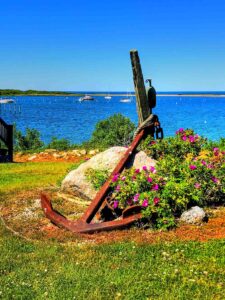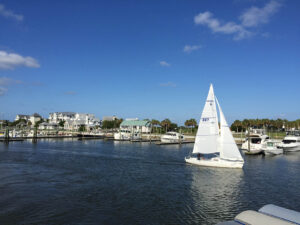Set just 90 miles south of the Florida Keys, Cuba is a cruising wonderland. It is the largest island in the Caribbean, with approximately 4,000 miles of coastline and 24 pocket bays — large, sheltered bodies of water with deep, narrow, offshore entrances. The country’s geographic diversity is stunning, with three distinct mountain ranges plus coastal regions filled with hundreds of cays teeming with coral reefs, reportedly the world’s most pristine.
With the recent easing of some restrictions between the US and Cuba, the country should be on your cruising radar. Our first voyage to the island was in 1997. Since then we have made more than 18 trips. At the moment there are still restrictions for private US registered boats (see the information at the end of the story from the US Department of Treasury).
Currently, Cuba has nine operational, all-purpose marinas for international visitors. Five marinas are located on the north shore and four on the south, with a good distance between them all, which leaves the average cruiser with a week or two between services.
The principal marinas are from the pre-revolutionary era, built in the early 1950s, with decades of little or no upkeep. Although facilities have dockside power, hook up can require an electrician to hotwire your power cord to the plug-in. Cruisers with alternative ways to charge batteries opt out of shore power. Getting freshwater dockside can also sometimes be an issue — many of the underground water mains are old, leading to poor water pressure or, at times, no water at all. Having said that, metered power and water rates at Cuban marinas are very reasonable, and improvements to facilities are slowly but surely being made.
The well-known Marina Hemingway is nine miles west of downtown Havana, and accommodates about 200 boats, with maximum vessel size of no more than 125 feet long with a 16-foot draft. This year, the marina replaced its antiquated power receptacles with new pedestals and wiring. The facility construction is fixed cement walls where vessels tie side-to. Most of the country’s other marinas are piling construction with cement decking on finger piers. The exceptions are the 30-slip marina at Cayo Largo in the south and the 10-slip marina at Trinidad at the foot of the Sierra Escambray Mountains — both of these facilities have floating finger piers not unlike the small marinas in the Florida Keys.
The country’s newest facility, Marina Gaviota Varadero, is near the famed hotel-beach strip Varadero, about 85 miles across the strait from Marathon, Florida. It is projected to have 1,200 slips upon completion, making it by far the largest marina in Cuba. Dockage is Europeanstyle, with vessels tying their sterns to docks by securing lines to side piles or moorings. There is a large haul-out and storage yard with a 100-ton travel-lift. Labor is available, but any necessary materials must be brought in — everything from sandpaper to varnish is difficult to find on the island.
All Cuban marinas are government owned and operated, so dockage rates are fairly uniform and are among the cheapest per-foot rates in the Caribbean. And, contrary to popular rumor, vessels can always anchor out among the cays and beautiful reefs. Cruising in Cuba can take a bit of extra effort, but the rewards are immeasurable. It’s a chance to experience the country’s incredibly rich culture and extraordinary people in a unique way. We all hope that US/Cuba relations continue to warm and normalize so that this exceptional country becomes ever more accessible to boaters.
Cheryl Barr, a Canadian sailor with a 200-ton RYA Yachtmaster’s license, has made numerous yacht deliveries worldwide including over 15 extensive cruises to Cuba aboard a 62-foot Herreshoff schooner. These voyages allowed Cheryl to collect and compile data for her two volume Cruising Guide to Cuba series. Visit cruisingincuba.com to order your Cuba guide. Other guides by the author include “Down East Circle Route” and “The Canadian Maritimes”.
May an individual authorized traveler use his or her private boat to travel to Cuba? This excerpt is taken directly from the US Department of Treasury — Frequently asked questions related to Cuba.
A person subject to U.S. jurisdiction engaging in authorized travel pursuant to an OFAC general or specific license may use a personal boat for his or her travel, and the travel of the boat’s crew, to Cuba provided that he or she obtains a license from the Bureau of Industry and Security (BIS) for the temporary sojourn of the vessel, and otherwise complies with all other applicable U.S. government laws and regulations. Goods exported to Cuba also require a license or must be eligible for a license exception from BIS (www.treasury.gov).





